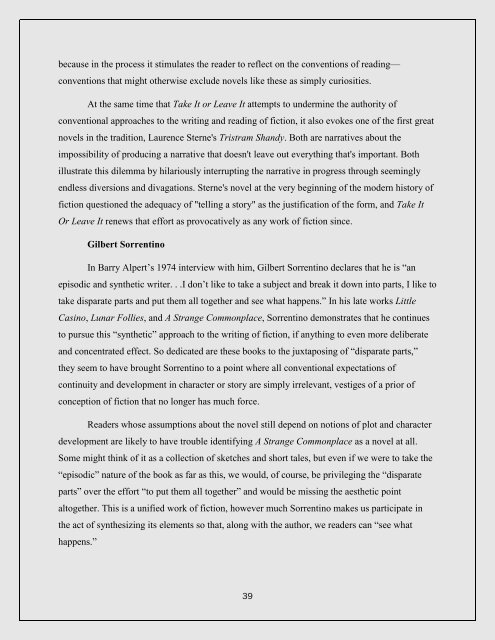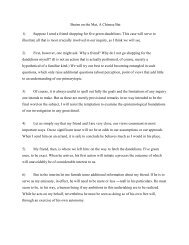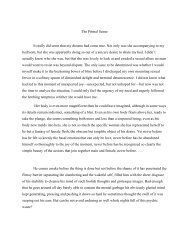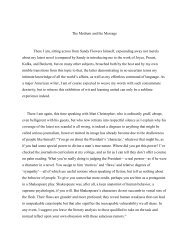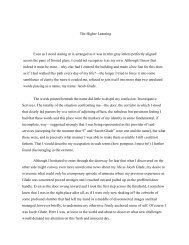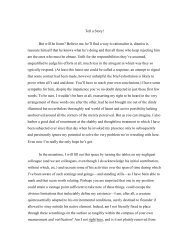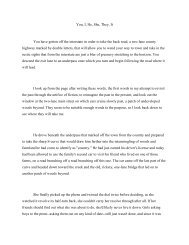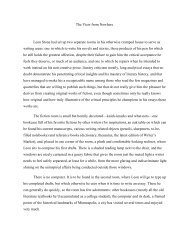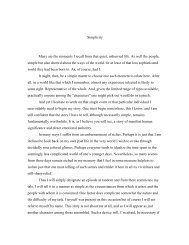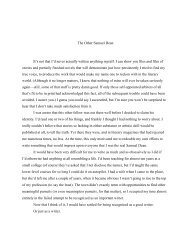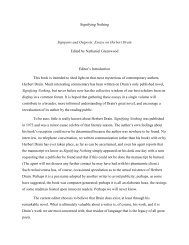APF
Create successful ePaper yourself
Turn your PDF publications into a flip-book with our unique Google optimized e-Paper software.
ecause in the process it stimulates the reader to reflect on the conventions of reading—<br />
conventions that might otherwise exclude novels like these as simply curiosities.<br />
At the same time that Take It or Leave It attempts to undermine the authority of<br />
conventional approaches to the writing and reading of fiction, it also evokes one of the first great<br />
novels in the tradition, Laurence Sterne's Tristram Shandy. Both are narratives about the<br />
impossibility of producing a narrative that doesn't leave out everything that's important. Both<br />
illustrate this dilemma by hilariously interrupting the narrative in progress through seemingly<br />
endless diversions and divagations. Sterne's novel at the very beginning of the modern history of<br />
fiction questioned the adequacy of "telling a story" as the justification of the form, and Take It<br />
Or Leave It renews that effort as provocatively as any work of fiction since.<br />
Gilbert Sorrentino<br />
In Barry Alpert’s 1974 interview with him, Gilbert Sorrentino declares that he is “an<br />
episodic and synthetic writer. . .I don’t like to take a subject and break it down into parts, I like to<br />
take disparate parts and put them all together and see what happens.” In his late works Little<br />
Casino, Lunar Follies, and A Strange Commonplace, Sorrentino demonstrates that he continues<br />
to pursue this “synthetic” approach to the writing of fiction, if anything to even more deliberate<br />
and concentrated effect. So dedicated are these books to the juxtaposing of “disparate parts,”<br />
they seem to have brought Sorrentino to a point where all conventional expectations of<br />
continuity and development in character or story are simply irrelevant, vestiges of a prior of<br />
conception of fiction that no longer has much force.<br />
Readers whose assumptions about the novel still depend on notions of plot and character<br />
development are likely to have trouble identifying A Strange Commonplace as a novel at all.<br />
Some might think of it as a collection of sketches and short tales, but even if we were to take the<br />
“episodic” nature of the book as far as this, we would, of course, be privileging the “disparate<br />
parts” over the effort “to put them all together” and would be missing the aesthetic point<br />
altogether. This is a unified work of fiction, however much Sorrentino makes us participate in<br />
the act of synthesizing its elements so that, along with the author, we readers can “see what<br />
happens.”<br />
39


